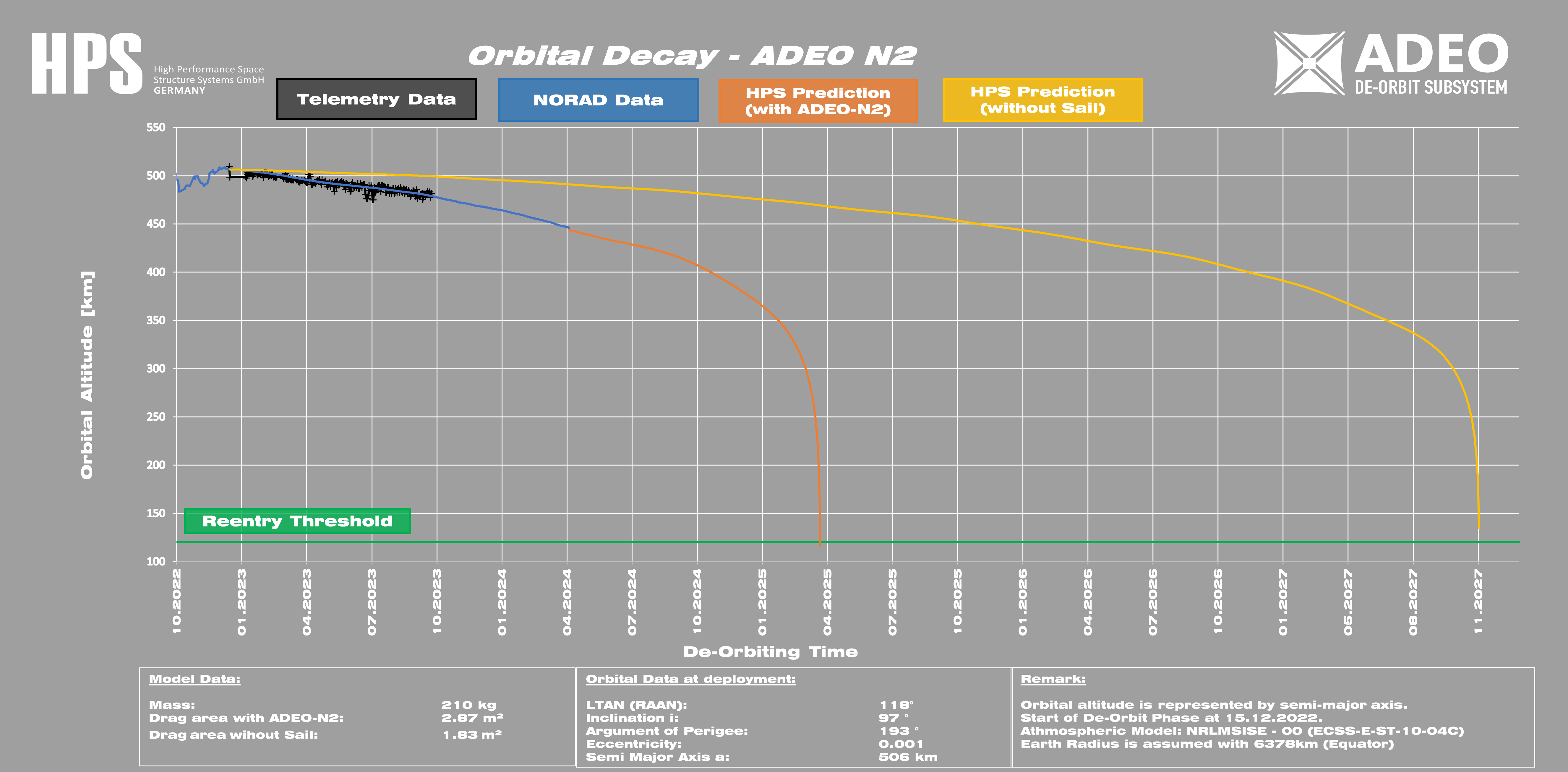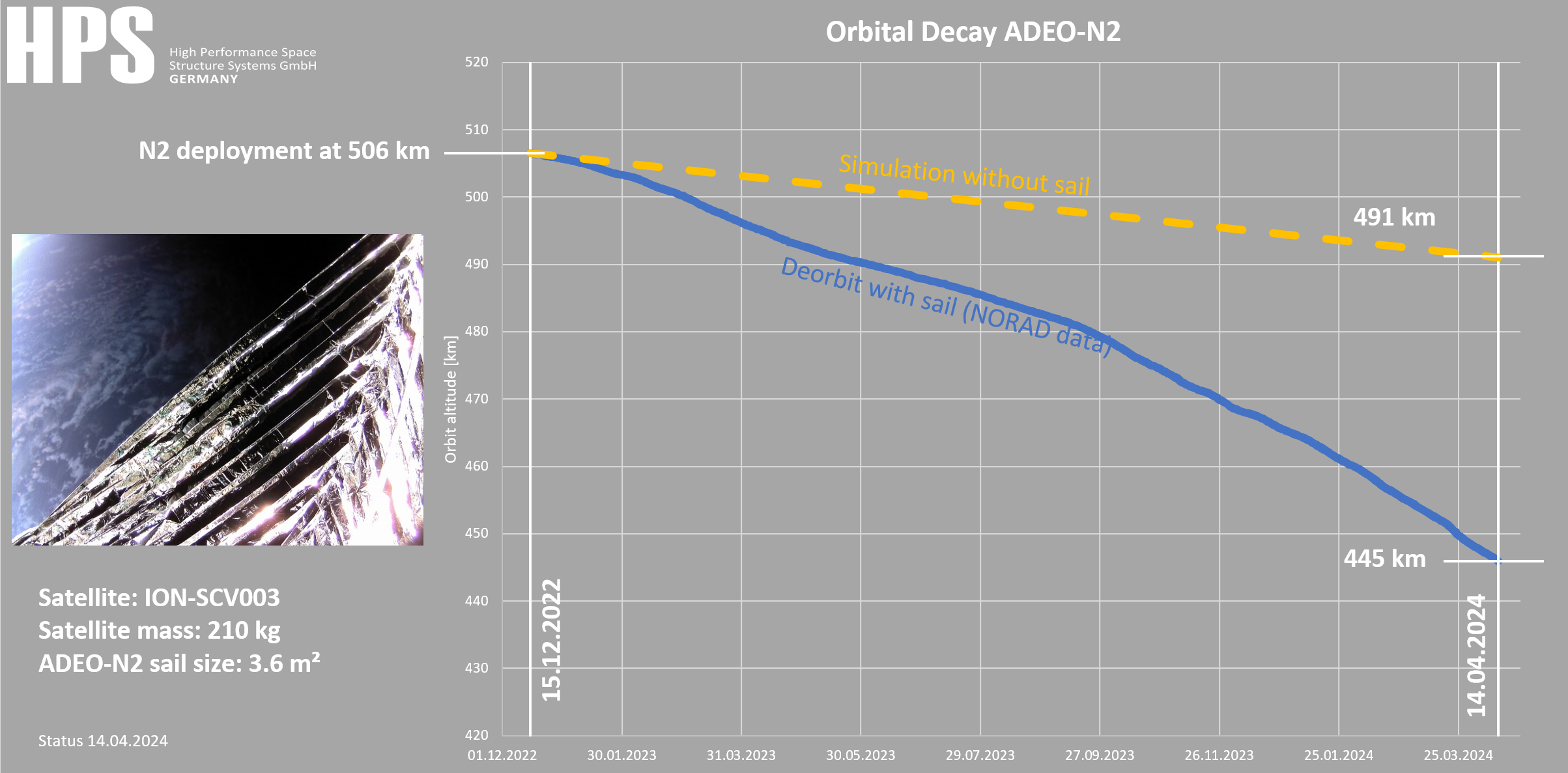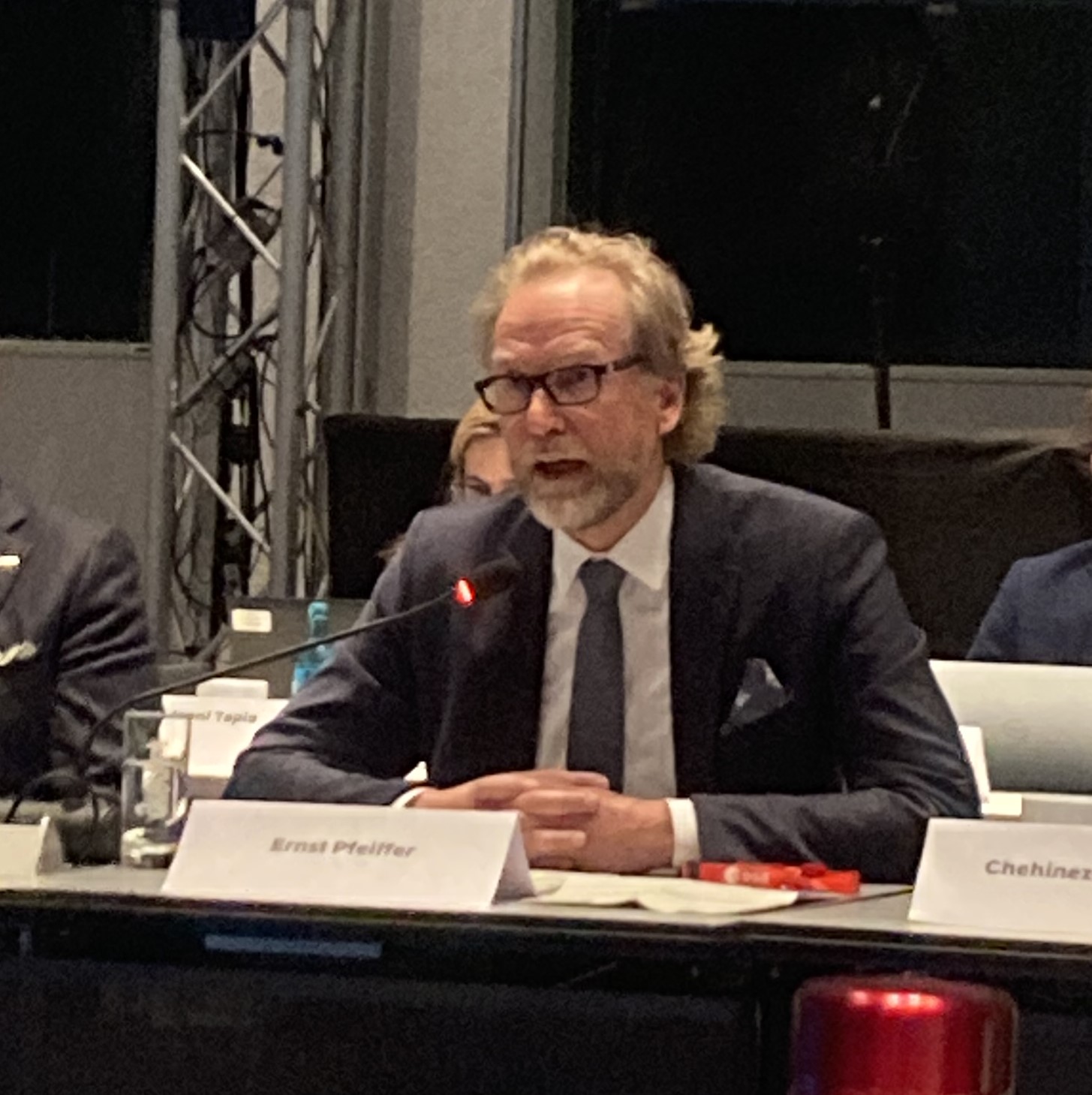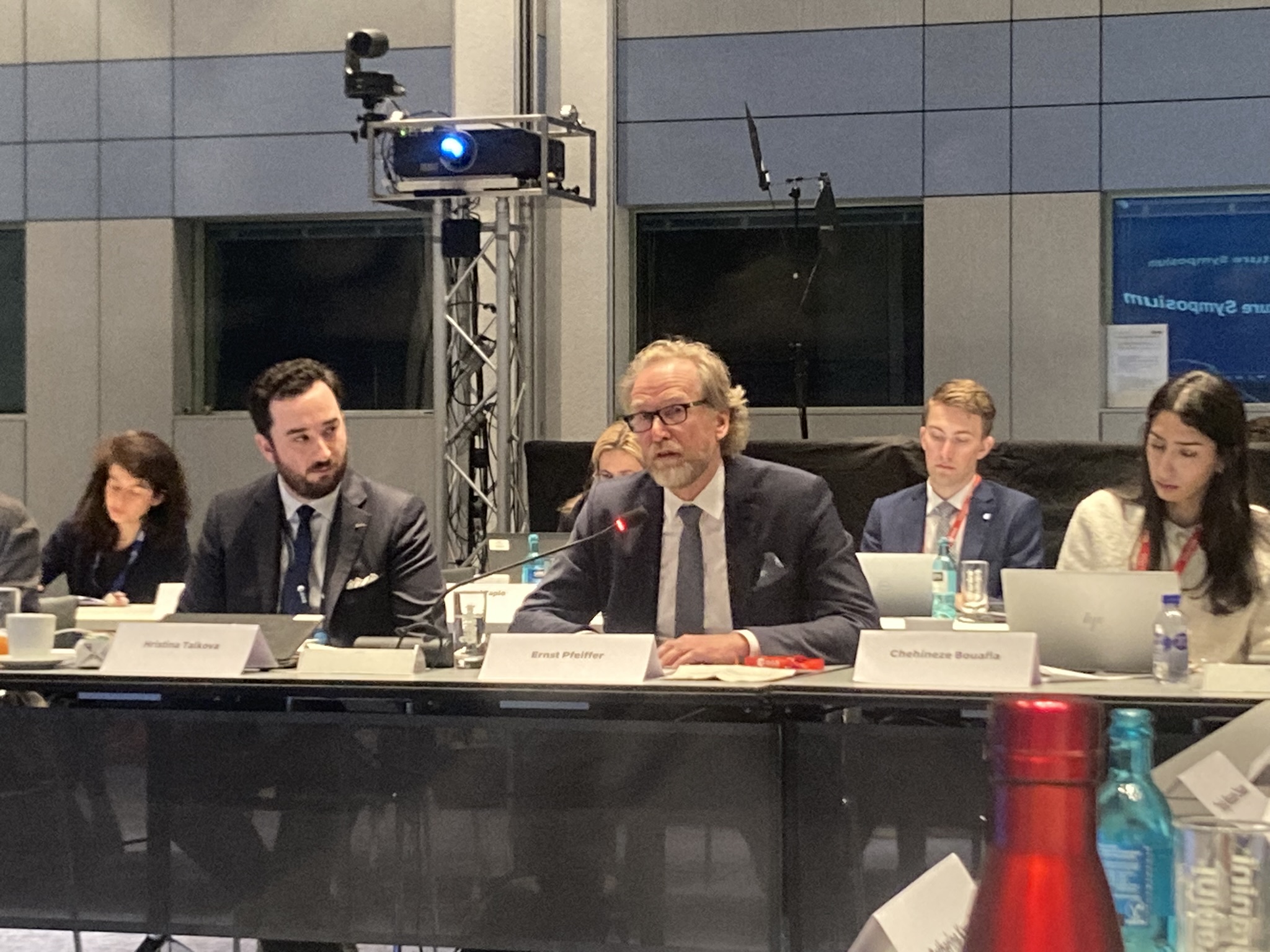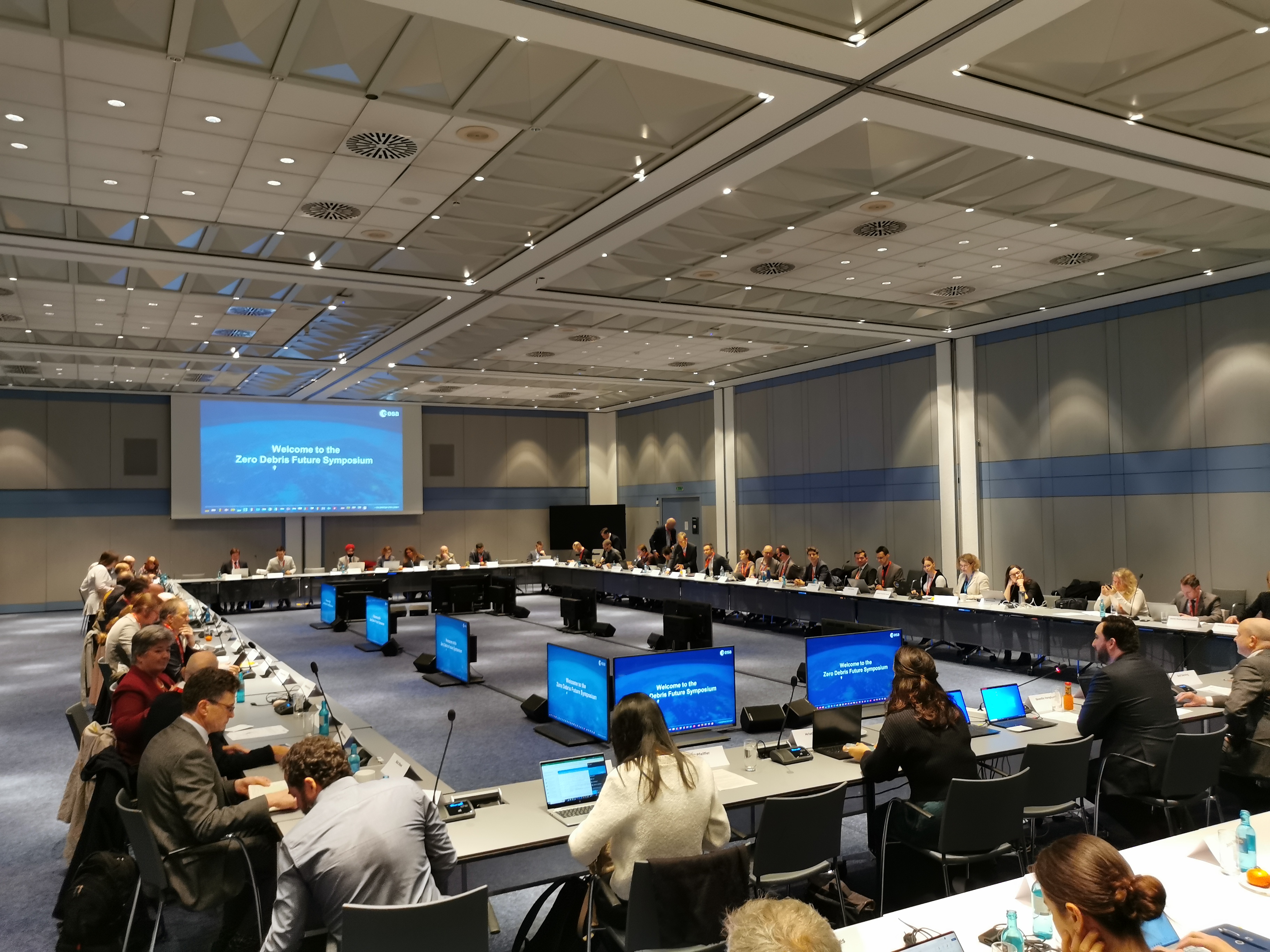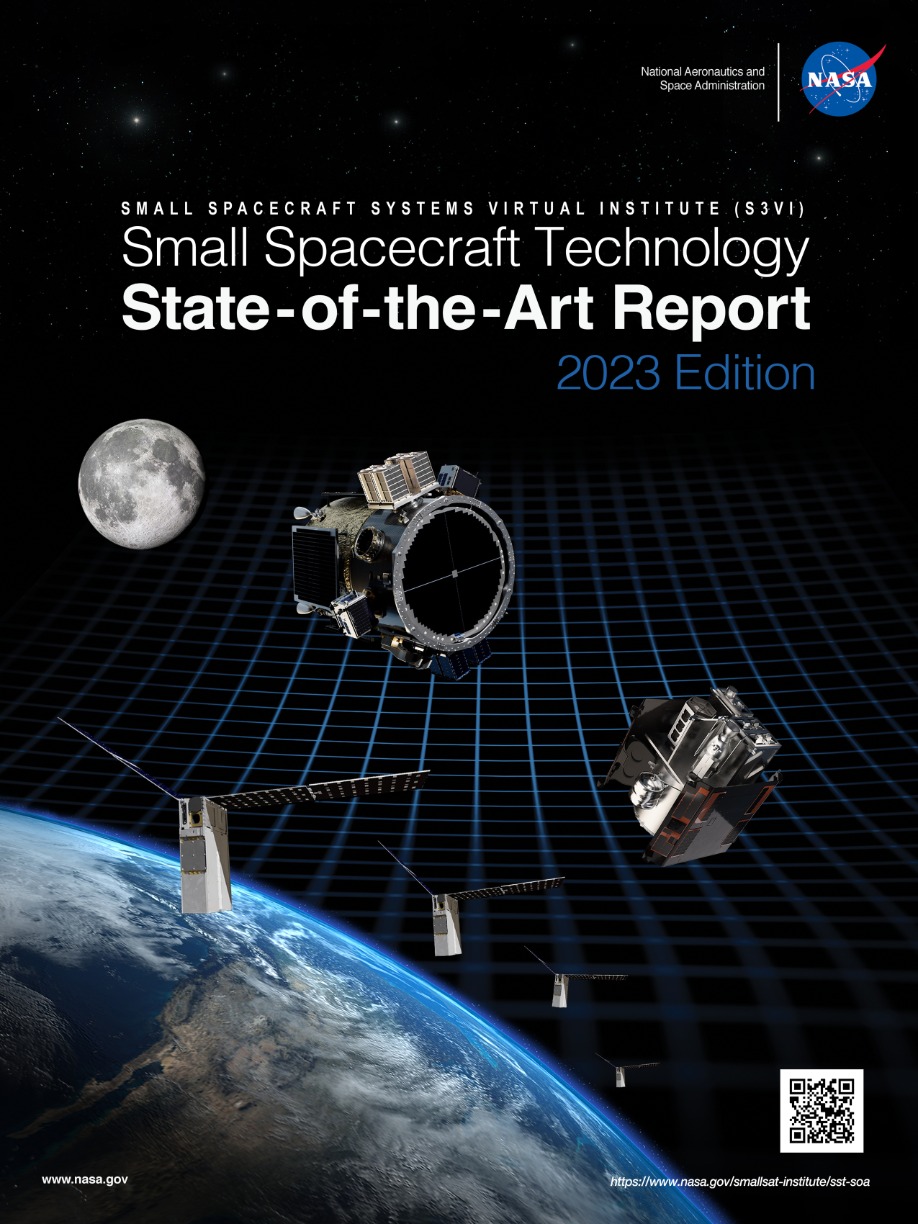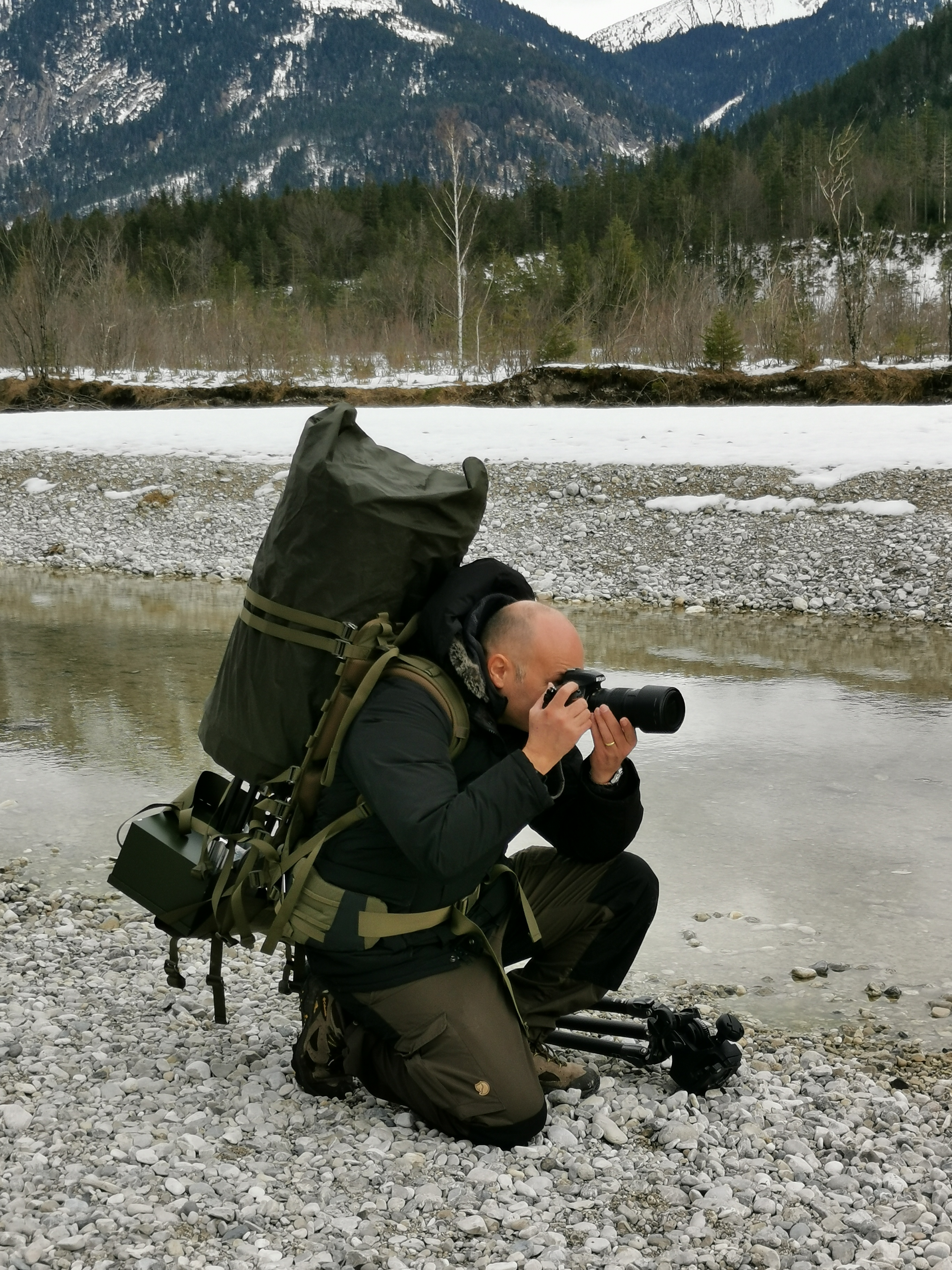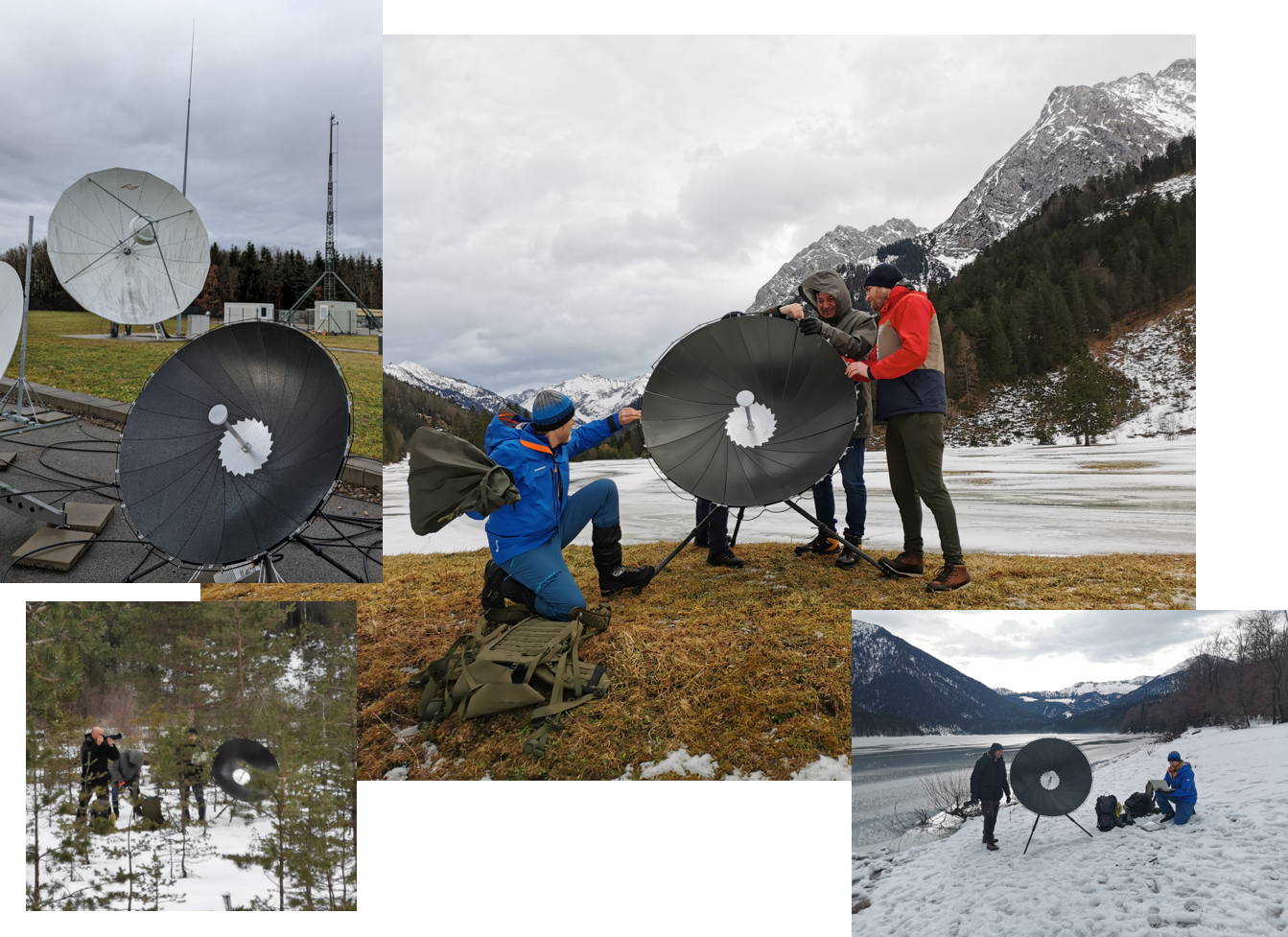July 2024
HPS Space News
HPS CEO as speaker from Europe at the International Day of the Moon in China
On Saturday, July 20, 2024, the fourth International Moon Day, proclaimed for July 20 of each year by the United Nations General Assembly with Resolution 76/76 on “international cooperation in the peaceful uses of outer space”, took place. The physical venue this time was China. Participants came from the United Nations / UNOOSA, the USA, India, Saudi Arabia, Japan and Europe/Germany, among others. Dr. Ernst K. Pfeiffer, CEO of HPS in Munich, had the honour of flying the flag for the latter at this high-level event, which was connected via video link.
He took the floor in Panel 2 on the topic “LUNAR HORIZONS: The Economic Implications of Lunar Exploration and Utilization”, together with Nasr Alsahaaf, Gongling Sun and Satoru Kurosu, moderated by Zhao Chenchen. The video is available here: YouTube. In his triple role as CEO, spokesperson for German SMEs and voice from Europe, Dr. Pfeiffer focused on these key messages: The challenges facing space – and here both SMEs and corporations, European countries such as Germany and Romania – as well as a highly ambitious ESA are as immense as the opportunities.
Radically divergent budget lines of the major continental players reinforce the requirements for models of cooperation, as do the different perspectives that politicians in particular adopt: some see mainly risks, while others see opportunities. Exploiting these opportunities largely depends on the availability of the two main factors: industrial infrastructure and people who can leverage synergies between scientific and commercial exploration. An additional boost to cohesion, despite all cultural and political differences, can come above all from global cooperation on projects such as the exploration and colonization of the moon.
It is equally clear, Pfeiffer told the international plenary session, that more peace between the peoples of the Earth will ultimately lead to more freedom of action and financial budgets in joint planetary exploration. According to Pfeiffer, UNOOSA must play a leading role in this. There are enough topics: space debris, mining rights, space traffic. According to Pfeiffer, the quality and ability to contribute of the many equipment suppliers from Germany will be able to play an important role in solving all problems.
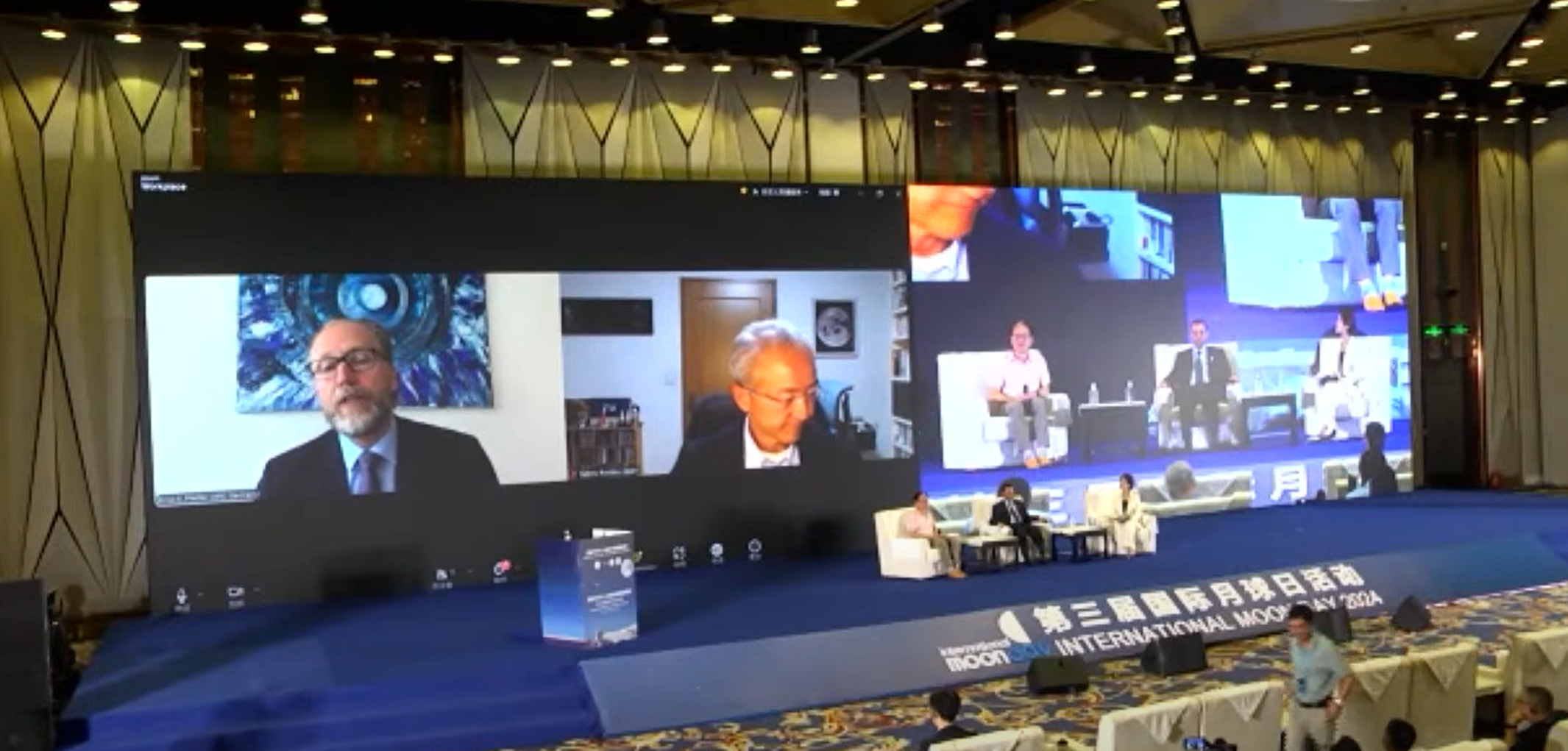
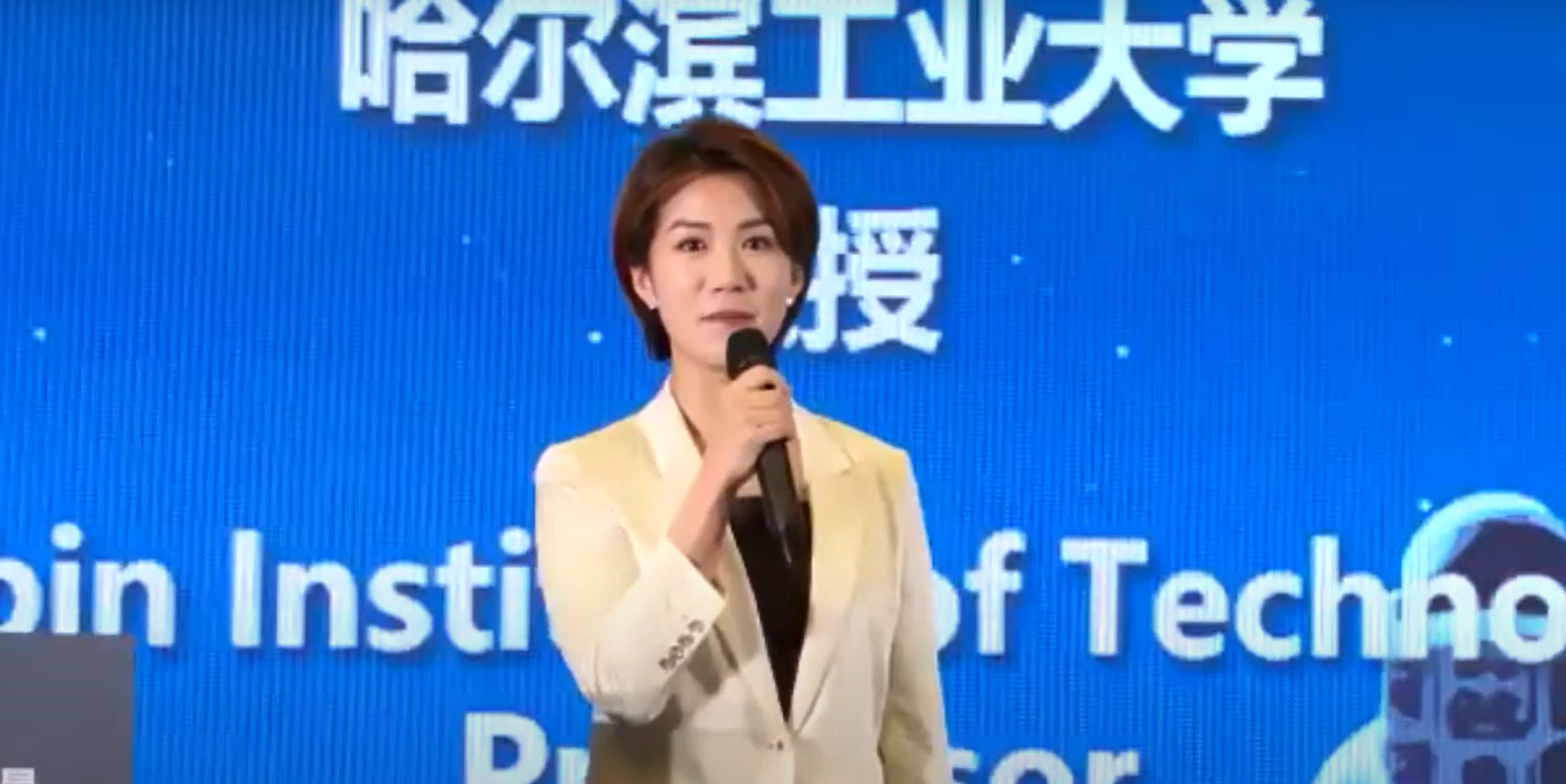
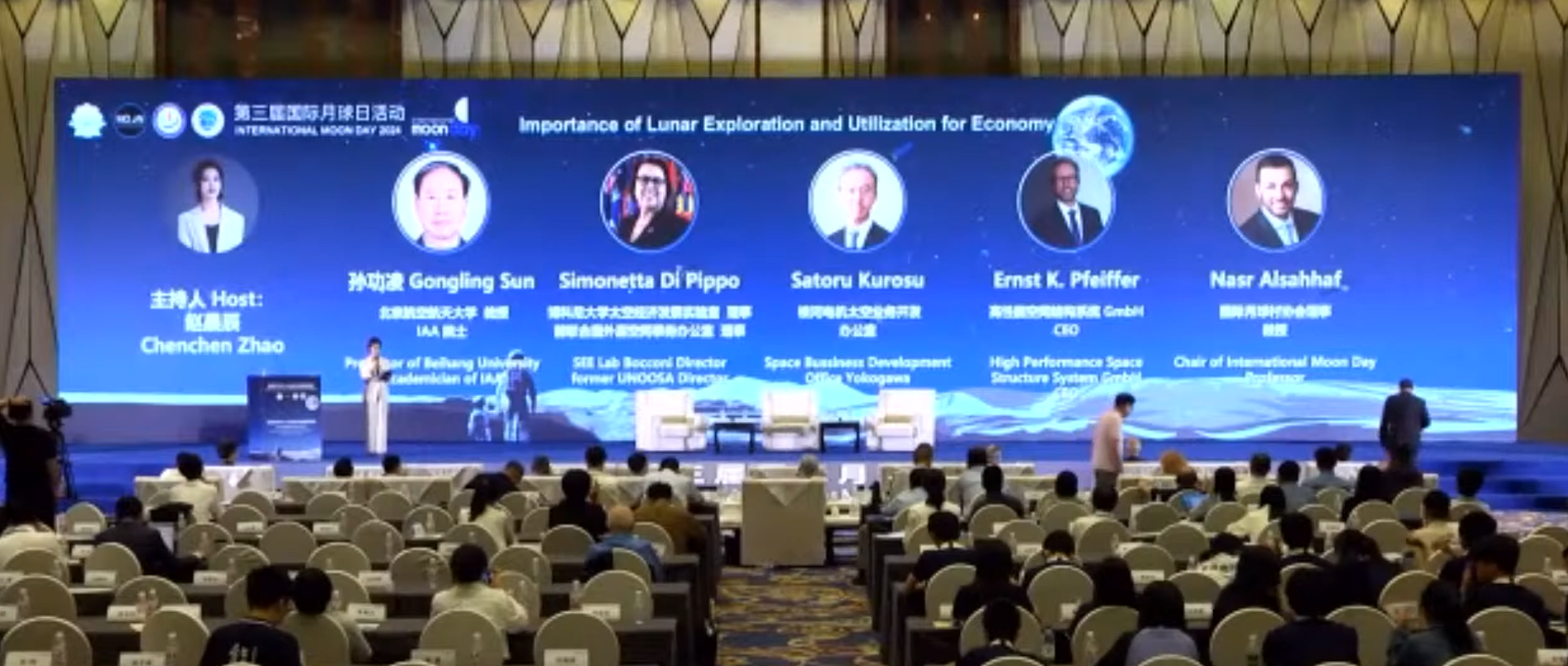
July 2024
Family & Friends Team Event at HPS Munich
HPS celebrates “Family & Friends”: July 10, 2024 is a special date – we celebrated with the entire HPS workforce and their families and all those many friends of our company according to the motto: Shared joy is double the joy.
Because we at HPS have many reasons to be happy: Since July 1, 2024, our HPS family has grown to a new record level with a total of 93 employees (including 11 freelancers and students) at the Bucharest (HPS Romania), Münchberg (HPtex) and Munich (HPS HQ) locations, and in Munich we have just expanded with a new, large floor in Hofmannstrasse as well as a large assembly area in the basement.
The circle of our friends from joint projects and association activities is huge, many from the Munich area came to visit us today, we were overwhelmed by the large number of surprise guests. Success is best celebrated with “Family & Friends”!
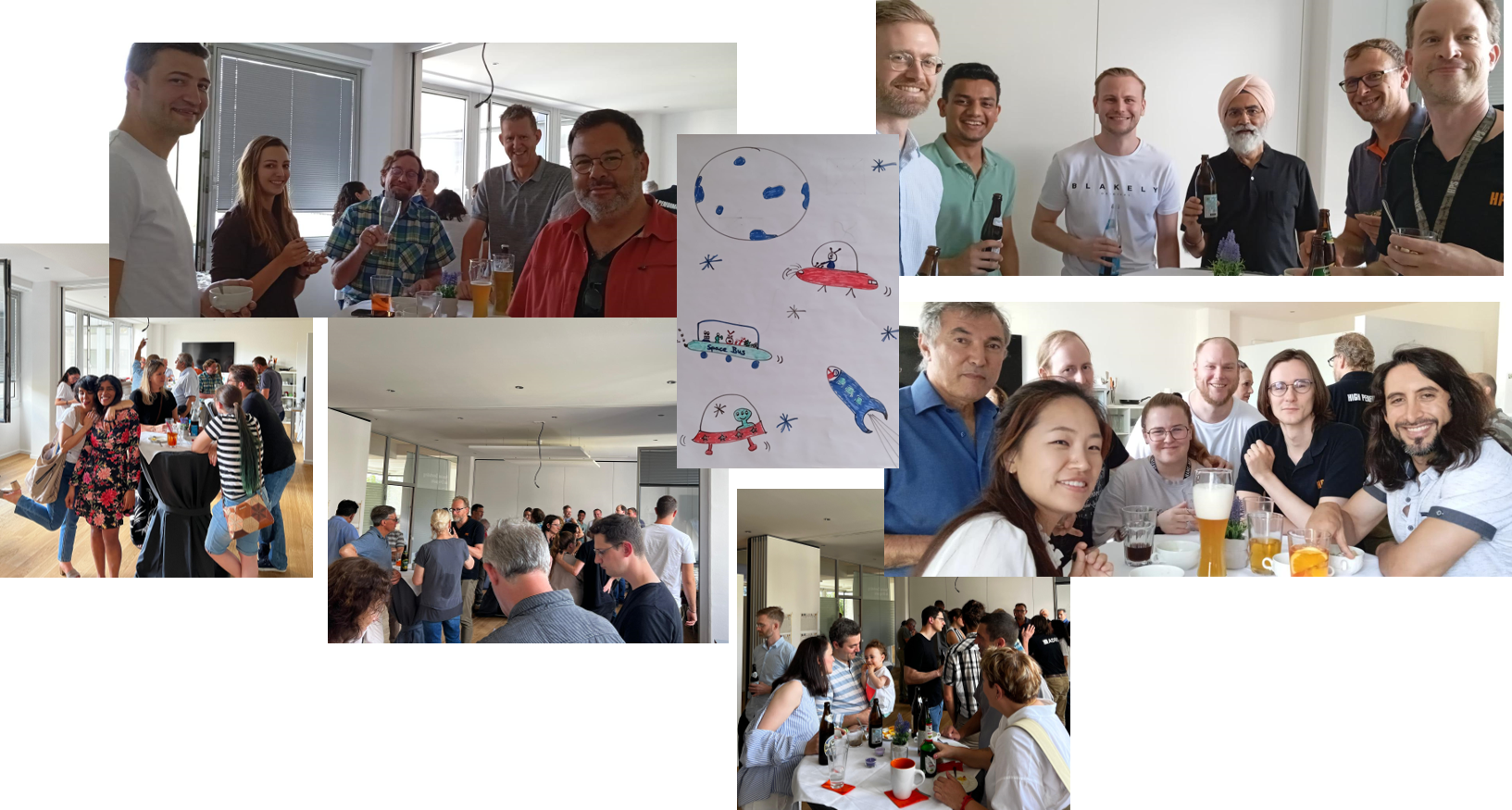
ESA pushing market-driven series production with co-financing of 1.2 million euros
July 2024
ADEO deorbit sail system from HPS
Space-related technologies should be clean and sustainable, because only then access to space will remain possible for future generations. This topic, which is currently a top priority of space policy, has led to a number of technical solutions which are now available on the market, with the ADEO deorbit system from HPS leading the way. Being recognized even by NASA, the ADEO dragsails ensure already before launch that satellites will not turn into space debris at the „end-of-business“. Instead, they re-enter the Earth’s atmosphere.
The European Space Agency ESA, as well as its national counterpart DLR and the Bavarian Ministry of Economic Affairs, has consistently supported the twelve years of development of this product by HPS. The sharp increase in demand from customers, particularly in the CubeSat and SmallSat sector from Europe, but also from North America and even Asia, is driven by the simple fact that both ESA, for European launches, and the FCC, for American launches, now demand on-board systems to be able to deorbit a satellite in just 5 years instead of the previous 25 years. Also SpaceX confirms that no more satellites will be launched without complying to this requirement.
With the ADEO variants “Pico”, “Cube”, “Nano”, “Medium” and “Large”, HPS meets the market demand for all sizes of LEO satellites in orbits between 300 and 900 kilometers. All variants are already in production, with manufacturing at the HPS production sites in Munich (Germany) and Bucharest (Romania) which are closely working together. Nevertheless, HPS and the technical ADEO experts at ESA have identified a number of optimization and expansion opportunities in order to urgently increase the pace of the series production and in response to the increasing price pressure of the New Space scene. The company is now raising the required funds for the implementation of these opportunities in the short term, using co-financing of 1.2 million euros signed by ESA on June 28, 2024.
ESA-Director Dietmar Pilz for Technology, Engineering and Quality in a videocon on July 1st: „my best wishes for this important technology development.“
HPS CEO Ernst K. Pfeiffer: “As a company, we are very pleased about the trust and continuous support from the European Space Agency, and therefore indirectly also from the German Ministry of Economic Affairs. However, this is at least as much a reason for joy for all those who, thanks to its technology programs such as GSTP, would like to see Europe in a leading role in the development of components for space technology and -transport, especially in the commercially so important LEO and MEO supplier market.
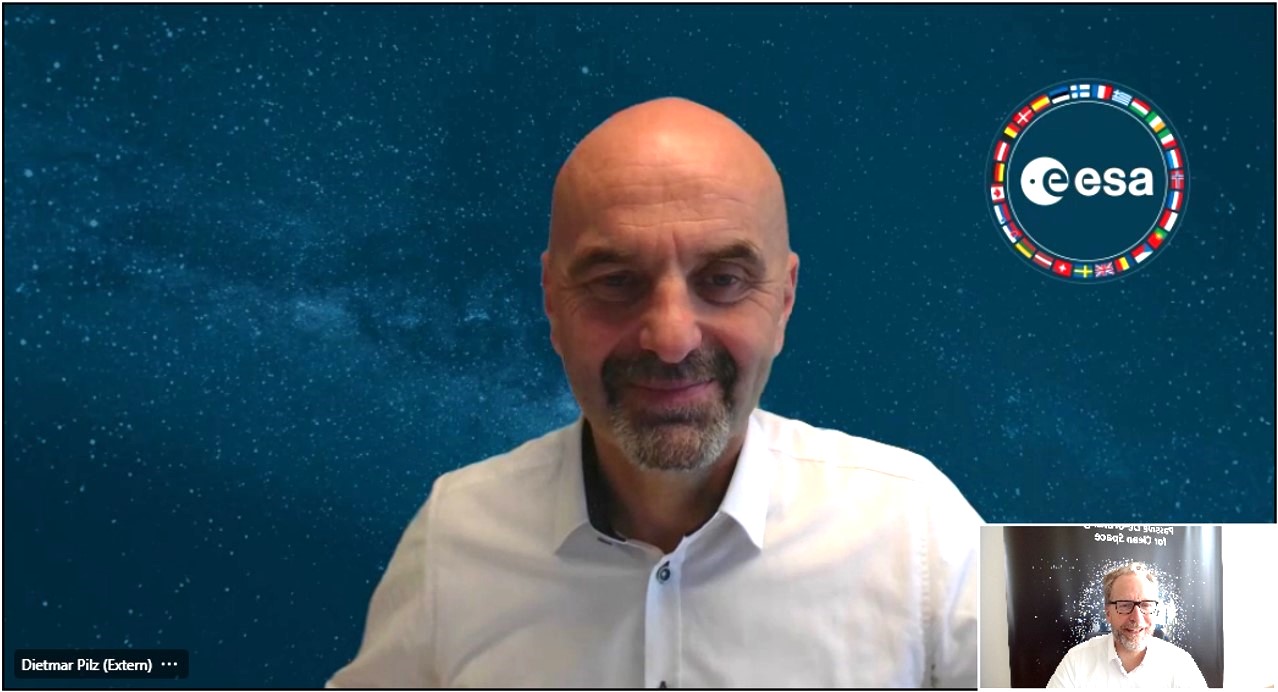
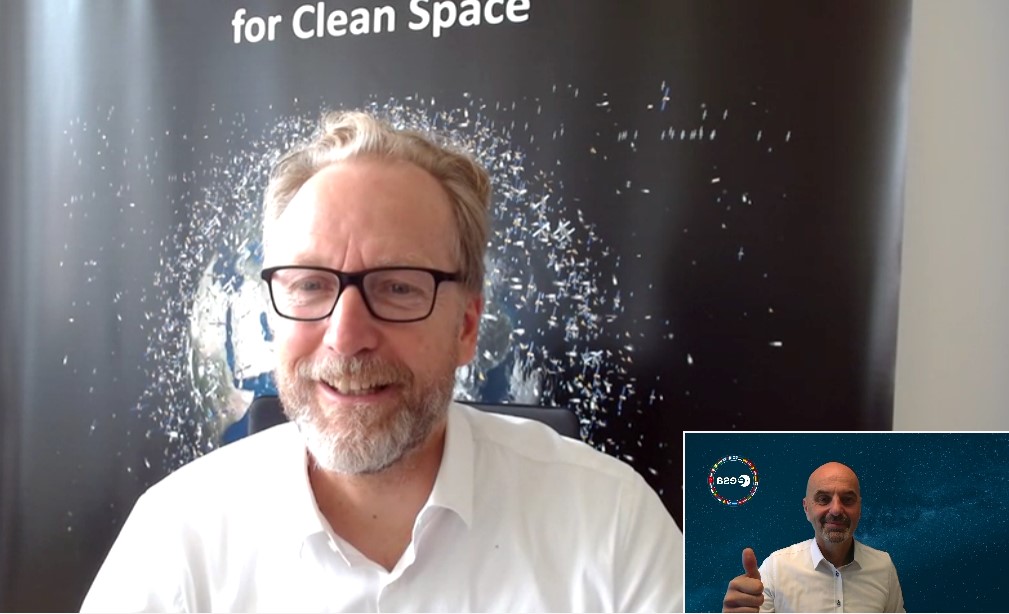
ESA’s priorities here are not only clear, but are also being consistently implemented. One milestone was the recent signing of the Zero Debris Charter in Berlin. The upcoming optimization of series production and the enhancement of our ADEO product portfolio, while maintaining the same level of quality and reliability, will effectively help to face the upcoming peaks in global orders, including those received very late, and thus still enable the launch of these satellites. We shareholders see our own funds, in the 7-digit range over the years, on the one hand as an investment in a strong future for HPS, and on the other hand as our moral obligation to make a contribution to the sustainable use of space.”
HPS Signing of the Zero Debris Charter at ILA on June 6, 2024
June 2024
ESA Leads the Way: Rapid Implementation of the Zero Debris Charter
Sustainability in space travel has also been an issue for the European Space Agency ESA for years. However, only a few months passed between the decision to adopt a Zero Debris Charter and its implementation.
Keynote speaker ESA Director General Josef Aschbacher also saw this as a sign that the time is finally ripe for concrete steps instead of pure symbolism, especially as ESA itself has provided significant impetus for the development of the two main technologies on the way to “Zero Debris”: firstly, ways of removing scrap from space, but above all, equipping satellites with deorbit technology from the outset so that no more waste is produced after the end of the mission.
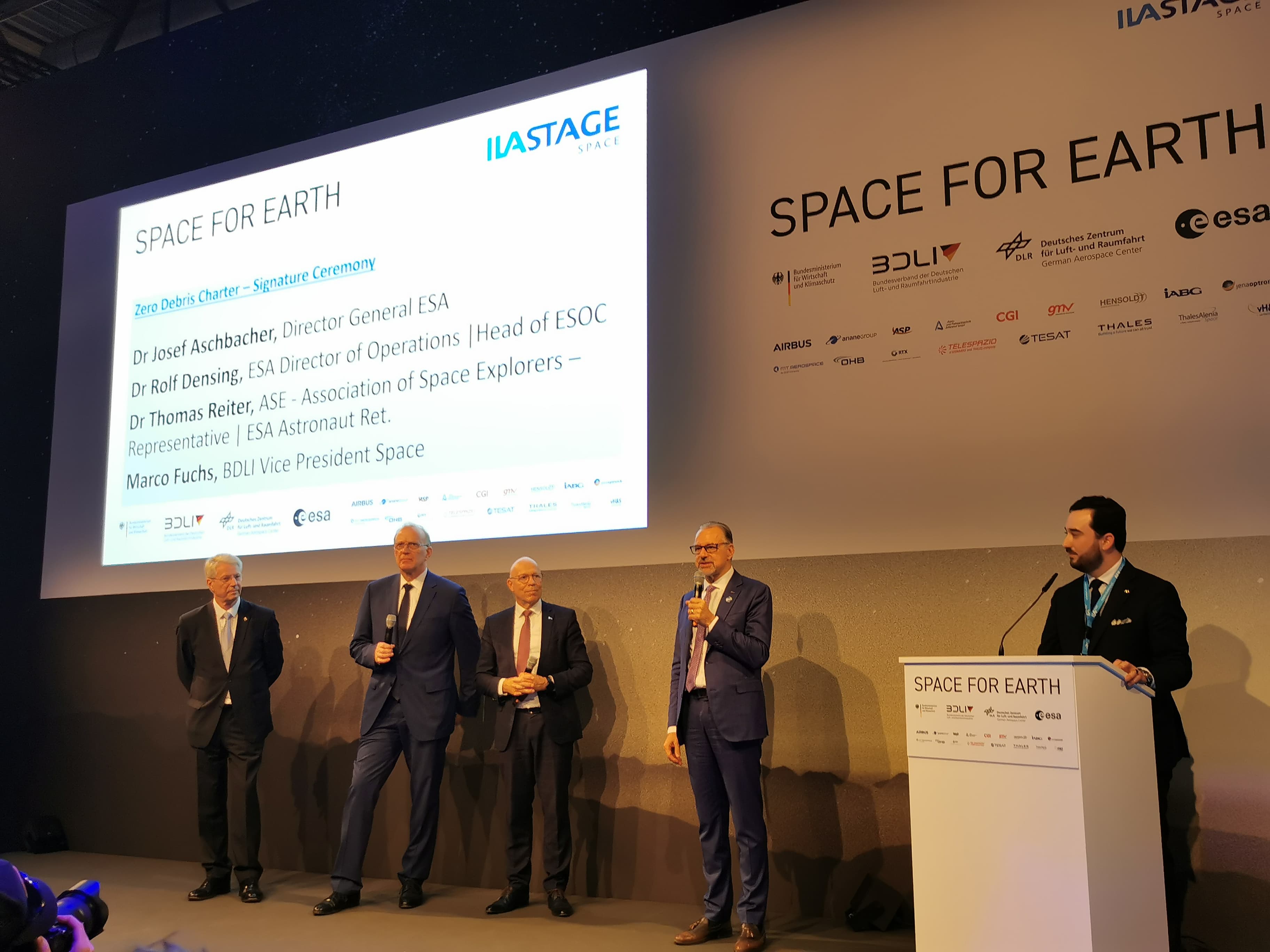
ADEO Drag Sail: The Key to Sustainable Spaceflight
The ADEO brake sail, which is now available as an entire product family for all sizes of LEO satellites from HPS series production, stands for this. In addition to grants and support from ESA, DLR and Bavaria, HPS CEO Ernst K. Pfeiffer also invested a lot of the company’s own money in the project, always firmly convinced that the hour of ADEO would come sooner or later – and if a little later, then all the more powerfully.
It was exactly the same when, in mid-2023, the ESA set the new rule of a deorbit maximum of 5 years for ESA-funded missions instead of the previous 25 years, and, accordingly, LEO satellites without ADEO (or similar) will no longer be launched at all from October 2024, as SpaceX, for example, makes clear in its conditions of carriage in accordance with FCC regulations.
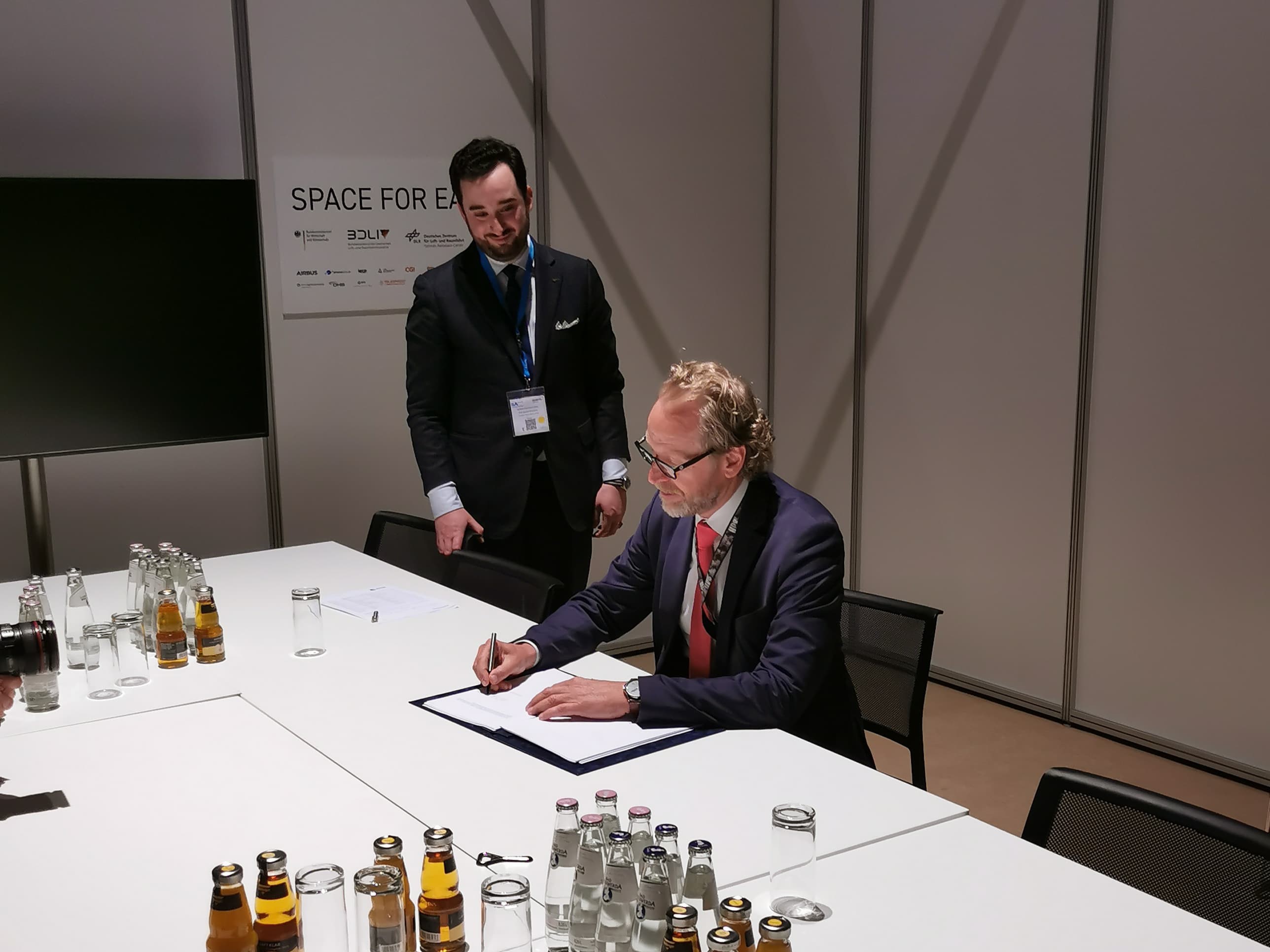
Historic Moment: 12 Nations Sign the Zero Debris Charter
The Charter was signed in Brussels on May 22 by 12 countries, including Germany. Since then, over 100 organizations, companies and entrepreneurs have been waiting for their cue to sign.
The ILA 2024 marks a very important stage on this path towards the sustainability of European space travel and sets an example for companies on other continents.
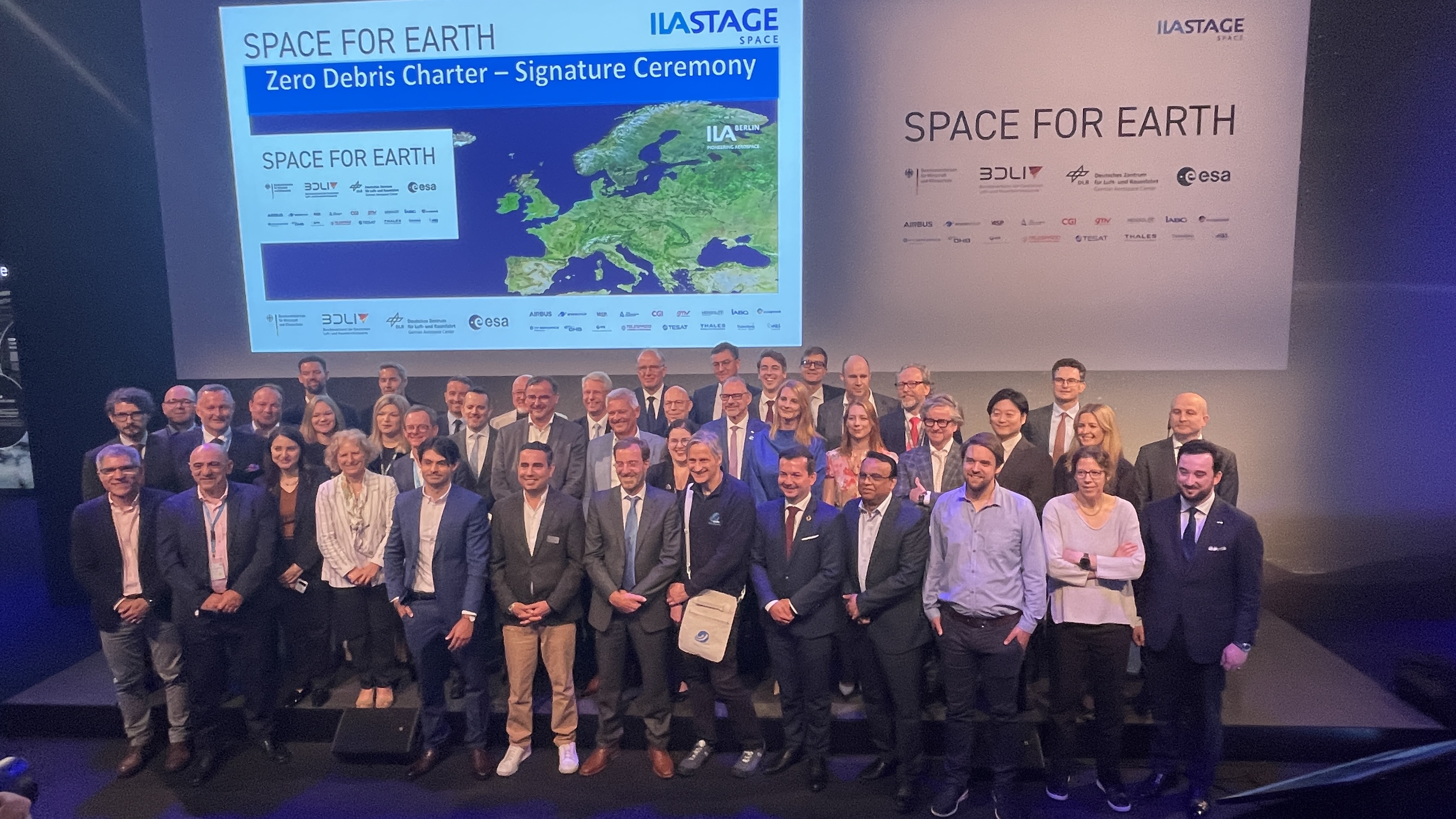
May 2024
Update on ADEO´s Performance
After 487 days of approachflight towards Earth, ADEO-N2 on the ION SCV 3 test satellite continues to sail on a record course without even a scratch: the current position has been reached in a threefold shorter time of the ADEO deorbit compared to the classic missions, whose data are subject to the prediction algorithms.
Expected touchdown at the edge of the Earth’s atmosphere: April 2025.
This is reported by the two mission managers, D-Orbit, Rome (satellite) and HPS, Munich (brake sail).
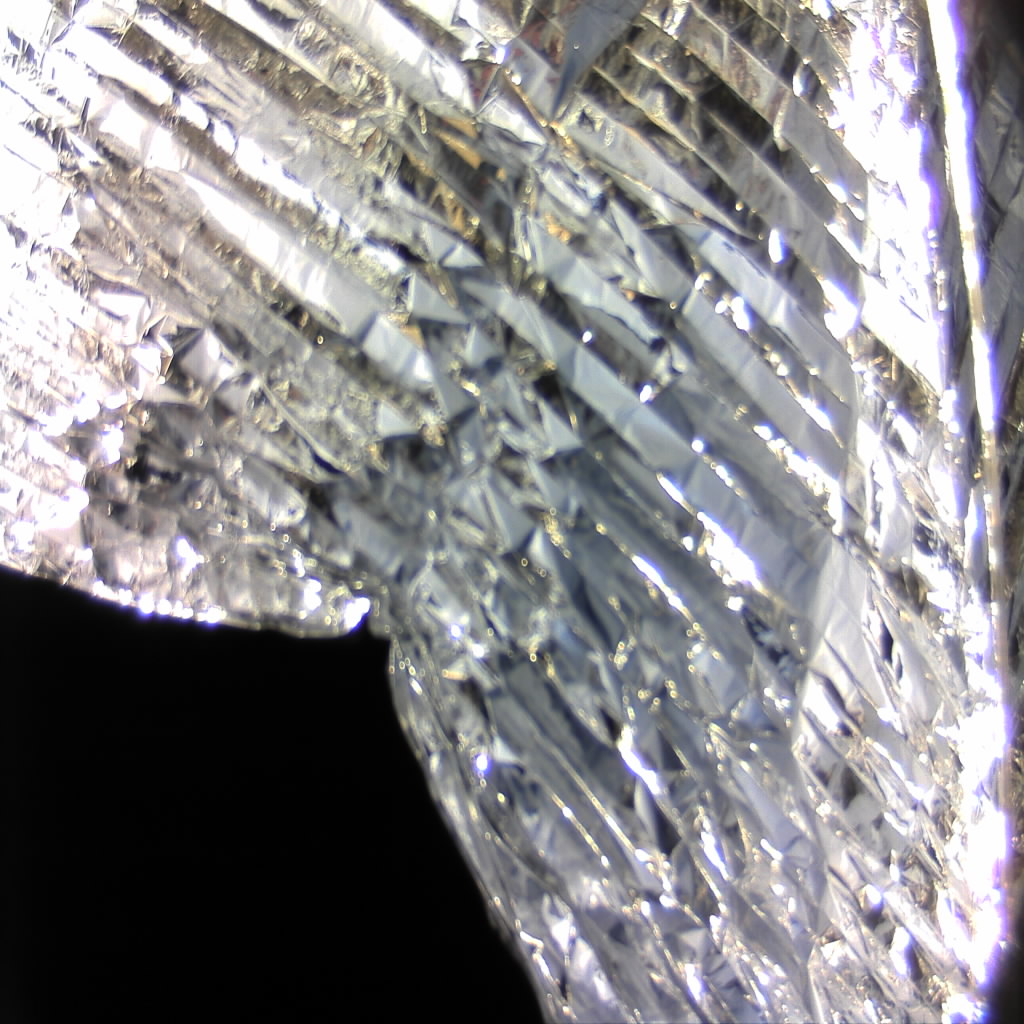
April 2024
Key Note by HPS-CEO Ernst K. Pfeiffer; ESA-ECSL Zero Debris Future Symposium, ESOC, Darmstadt, 04.04.2024.
ESA Zero Debris Future Symposium, Darmstadt
Opportunities from Implementing a Zero Debris Vision for Europe
Dear Director Densing,
dear Holger, dear Quentin,
dear colleagues from agencies, industry, research and development.
1. INTRODUCTION
It is always difficult to sell it to the general public as an “opportunity” when new regulations come into force. New rules always have something to do with restrictions, with control, with costs on all sides.
Well, let me talk about DIRECT and INDIRECT opportunities in relation to a “Zero Debris Vision”, even if I will sometimes use critical words.
2. DIRECT and INDIRECT Opportunities.
Yes, there are a number of companies for whom the
“Zero Debris Approach” could be a very promising DIRECT opportunity. The list of business areas is not extremely long, but extremely interesting:
First of all, there are a number of different deorbit-technologies.
In recent years, ESA has unfortunately only mentioned to the public the ACTIVE removal of EXISTING large junk. However, it will still take many years before 1,000 items per year can be removed commercially.
But there are already some deorbit-kits for satellites that MITIGATE debris before being created: chemical engines (MBDA, De-Orbit), electric propulsion (Morpheus), tether systems (Sener), or deployable drag sails (e.g. from my company HPS), already with TRL9. The winner-technologies will be those a) that will work, even if the satellite fails, b) that do not shorten the mission time, and c) that are emission-free.
Other business opportunities include debris measurement, debris software models, accurate position determination, collision prediction service, automatic collision avoidance systems, deorbit prediction software, or demise calculation software. All this is creating great opportunities for SMEs, the supplier industry and for service models. In the future there will also be a market for certifiers (a kind of “TÜV” for launch permission), for insurance companies, lawyers and much more.
Now to the INDIRECT opportunities, they are very simple: If we do nothing, there will soon be a collision-domino in LEO, a catastrophe. That’s it. No more space business, we all can close our companies, “Game Over”.
Anyone who hasn’t recognized this can no longer be helped. In this respect, the “Zero Debris Charter” is an extremely important sign to European space players. It will also motivate many countries to introduce appropriate measures.
Surprisingly, but understandably, the newer, small space states that want to do missions by themselves, are at the forefront. A recent article wrote: “Experts at the United Arab Emirates Space Agency are urging global decision-makers to put space debris mitigation at the top of their agenda.”
3. How do direct opportunities become a reality for Europe?
In the short term, opportunities become only reality, if European regulations become binding, when sanctions and fines are threatened. Why should a satellite builder spend extra money on deorbit-technology, if he doesn’t have to?
Catalysts in cars were also only installed, when regulations were set in place.
Of course, regulations must not put European providers at a disadvantage on the global market. And first regulations must be easy to understand and easy for the industry to implement.
Tell a politician: “The casualty risk from re-entering objects should remain lower than 1 in 10,000”…
When I was in February in Vienna at the United Nations Workshop on “Longterm Sustainability of Outer Space Activities”, I promoted on the podium in front of many states the simple “5-years deorbit rule”…; all UN-delegates easily understood it.
Or tell today a motivated satellite start-up: “The probability of space debris generation through collisions and break-ups should remain below 1 in 1.000 per object during the entire orbital lifetime”.
How is he supposed to prove that? And who checks that?
Other non-European countries have also recognized the opportunities. In mid-February there was a “Space Debris Workshop” in Saudi Arabia, where countries from all over the world exchanged ideas about the opportunities.
Opportunities in a global market require massive investment and speed, and some countries will provide it. If we are not attentive here in Europe, the world will overtake us.
Or do we want great European ideas/companies to be bought up by non-European companies?
For doing the very big things, small companies will have little chance.
20 years ago, there were hundreds of online delivery services, now there is basically only Amazon.
20 years ago, there were hundreds of online dating sites…now there’s basically only Tinder left in the world’s connection.
Seriously, when it comes to “sustainable space”, it is primarily the responsibility of states and agencies to introduce it into their missions and, at the same time, to accept respective increased mission costs.
It is a political task not to become dependent on technologies and services, when new regulations are introduced. If you also strive for leadership, appropriate financing and support of the big and small companies are necessary;
we in Europe cannot only rely on venture capital alone, especially when it comes to the issue of zero debris.
(And, on this occasion, leadership doesn’t work with a 30 hours-week or retirement at 60.)
The salvation doesn’t come only with the start-ups either. We in Europe need a healthy mix of established companies and start-ups, depending on the task. We’re still talking about space missions, with technology at the limits of feasibility. You need experienced specialists to achieve success. Global collaborations are helpful for large tasks.
(All the best for you, ASTROSCALE, a cooperation in 3 continents.)
That leads me to the next point, some
4. MEDIUM-TERM TECHNOLOGY PRIORITIES
Three examples from my point of view:
1) If I had real money
(and if I also wanted to see large parts of the world dependent on me),
I would build a GIGANTIC system of debris monitoring, with the largest AI-based database. I would sell this data, with an additional warning system as an option….
It exists already? Yes, I know, but only for larger junk, larger than 10 cm.
In the next 3 to 5 years the small particles, even smaller than 1 cm, will become the greatest unknown danger. They will multiply in a domino system, come in swarms and endanger entire constellations.
I would have a fleet of LEO observation satellites (with their own deorbit kit, of course) operating with different sensors, measuring directly in orbit impacts 24/7 and letting the AI do the rest.
There are already a few ESA-approaches to this in the Space Safety Program, but unfortunately only with underfunded studies; still.
2) Autonomous anti-collision-subsystems for autonomous flying.
A global market for small modules, buyable to everyone.
Will Europe be ahead here? Technologically and price-wise?
3) What is missing is a comprehensive software to predict, whether a satellite will burn completely or not. Because anyone who cannot prove this, especially for satellites >200 kg, must (according to the Zero Debris Charter) perform a controlled (and therefore expensive) re-entry over the seas.
Satellite builders prefer to buy certified software.
However, this software must be affordable, otherwise only large companies can afford it and that cannot be the goal of a Zero Debris initiative.
5. But what should be done NOW, IN THE SHORT TERM?
1) The 25 years deorbit rule dates back to the Middle Age, but is still firmly anchored in most minds. I strongly recommend that the rule:
“Deorbit within 5 years after end-of-business”
will be introduced immediately for all ESA missions into LEO and that this will be communicated publicly from the highest level, e.g. right after signature of the Zero Debris Charter.
2) Neither ARIANE 6 nor VEGA may carry any more satellites into LEO, that do not follow this rule.
Elon Musk is showing the world: from October onwards, there will no longer be permission for environmental sinners to fly on FALCON 9.
3) Each satellite should have retroreflectors on board to enable accurate tracking from the ground.
4) Financial vouchers should be awarded by ESA to companies and universities that install zero debris technologies on their satellites.
5) Director Densing, if European countries are serious about environmental awareness and “Clean Green Space”, the Space Safety program at CMIN 2025 must be significantly increased.
6. FINISH
So, I think that’s enough powder for a lively panel discussion.
For now, thank you very much for your attention.
February 2024
HPS with ADEO in top position in NASA’s technology report
Since its inception, the U.S. space agency NASA has been the primary driver of progress in aerospace technology. NASA’s Scientific and Technical Information (STI) program plays a key role in ensuring that NASA maintains this important role. Its Technical Reports Server contains one of the largest collections of aerospace science STI in the world, including “Technical Publications” on critical research and achievements of lasting value.
Focus on deorbit technologies
The aim of the latest publication, published in February 2024, on groundbreaking technologies, particularly in the field of small satellites, is, among other things, to present the world’s leading deorbit technologies, which can be used to technically implement the new regulation on the disposal of LEO satellites, which has been sharply limited from 25 to 5 years in both the USA and Europe. In its evaluation criteria for technologies, NASA is primarily guided by the TRL standard of the respective products and also pays great attention to the scalability achieved.
ADEO has it all: top values up to TRL-9, scalability and flight successes
According to NASA, the deployable brake sail system ADEO from HPS occupies the leading position on the global market in the category of passive deorbit systems. This is because ADEO not only offers technological maturity up to the peak value of TRL-9, but also a successful flight heritage and is also prepared for equipping various small satellite formats thanks to the HPS series production of an entire product family. This broad protection of HPS’s leading position with ADEO has been widely recognized by NASA – despite the fact that it is a competitor with several projects in this field:
“The Drag Augmentation Deorbiting System (ADEO) is a drag sail developed by the German company High Performance Space Structure Systems (HPS). The sail is scalable and HPS has already launched a number of missions with different configurations up to TRL 9. The ADEO-N series is tailored for small satellite missions of 20-250 kg, while the ADEO-M and ADEO-L series are designed for larger missions of 100-700 kg and 500-1500 kg respectively. The ADEO-N series corresponds to a sail size of 5±2 m2, while ADEO-M covers areas of 15 ± 5 m2. There are also smaller versions, especially for picosatellites (ADEO-P) and CubeSats (ADEO-C), and the possibility to configure the sail size according to customer requirements. Various missions have already tested the ADEO-N product family. The NABEO-1 was launched on a Rocket Lab Electron rocket kick stage in 2018. The sail was deployed just 90 minutes after launch. There was a problem measuring whether the drag sail was initially deployed, but visual ground observations confirmed successful deployment and performance. At the end of December 2022, the ADEO-N2 sail was launched into space by the ION-2 spacecraft carrier of the Italian launch service provider D-Orbit. The successful deployment was recorded by the ION carrier’s on-board camera.”
ADEO – Deorbit technology as a prerequisite for launch authorization
With this presentation in one of the most important technology documentations of the US space agency NASA, HPS with ADEO becomes a highly visible beacon in the worldwide field of passive deorbit systems for all satellites that have to comply with the new 5-year deorbit requirement in order to be approved for launch by American or European launchers
January 2024
KEAN II passes the acid test at the University of the German Armed Forces and in the field
KEAN, the integrated deployable lightweight manpack complete antenna from HPS and its development partners, has taken a decisive step forward in the KEAN II (Second Generation) version: it passed the tough link test at the University of the German Armed Forces in Munich in December 2023 and the handling test in the field. This brings the goal of the joint HPS project much closer: the development of a complete system for bidirectional satellite communication based on preliminary developments already carried out by HPS and these specifications:
- Conformance to satellite operators (e.g. EUTELSAT, INTELSAT)
- Ku-band, 1.2 m diameter, also X- and Ka-band capable
- Including communication system, electronics, battery, tripod, backpack carrying system
- Total weight <20 kg
- Commissioning in under 15 minutes from backpack transport to satellite link
- Innovative, cybernetic folding mechanism based on the opening and closing of flowers
- Design and definition of components and production processes suitable for series production for a rapid transition to series production in large quantities.
Partners in the project are:
- The system supplier MTEX (Wiesbaden) with a focus on ground stations and electronics.
- The start-up Blackwave (Ottobrunn) with the economical series production of complex carbon components.
- The Chair of Carbon Composites (LCC) at the Technical University of Munich for the design of innovative extremely lightweight reflector fins.
- The Bundeswehr University for defining the user requirements and carrying out the antenna link tests with satellites.
The additional antenna deployment tests in rough terrain in the Bavarian Alps were closely monitored from the air by camera-guided drones; they provided complete documentation of the challenges, but also of the success of these tests. Videos are available at the YouTube Channel. Particular attention was paid to features and elements such as these during the tests:
- Wearing comfort off-road (walking and running) with different body sizes
- Assembly and disassembly over time in rough terrain (bushes, gravel, snow)
- Speed of unfolding and folding
- Handling by untrained test persons
- Wind load compatibility
- Handling in cold conditions (requirement: from -30o C to +55 o C)
- Robust construction
The target markets for applications of this completely new technology for communication via satellite, especially on X-, Ku- and Ka-band, cover all three conceivable directions:
- commercial, such as journalistic reporting from rough terrain
- institutional, such as rescue and disaster relief operations
- military, such as for small special forces operating independently of vehicles without a direct connection to the base of fully equipped large units
- scalable up to 3.6 m, also for mobile transportation on small vehicles.
Beyond the technical successes, KEAN II is currently growing wings from a completely different direction: the European Commission’s major IRIS2 project to establish absolutely secure connectivity via a dedicated multi-orbit constellation of several hundred satellites from LEO to GEO is giving a significant boost to all those application scenarios that were previously considered to have only seen very hesitant development due to their dependence on non-European constellations and individual satellites. This applies in particular to the institutional and military markets, both of which are now growing into larger dimensions.
The last stage of development was funded by the German Aerospace Center (DLR) as part of the ILKA project with funds from the Federal Ministry of Economics and Climate on the basis of a decision taken by the German Bundestag.
The magic triangle: competence – quality – capacity
January 2024
Servicing Europe´s ambitions in space from Romania
In less than a blink of an eye, it will be a full decade that Romania´s leading space-SME “High Performance Structures Inovatie si Desvoltare S.R.L.” will look back to the beginnings of the company´s history in 2016, when it opened its office in Bucharest. Founded to meet the needs for additional capacities of HPS Munich, HPS RO quickly developed ttowards becoming one of the most renowned full-service spacetech-companies from ESA-member states in the Eastern Europe.
Just one question to managing director Astrid Draguleanu:
From the very beginnings and through the years, you have been in the position to significantly participate in shaping and guiding the company´s development. From your perspective, which factors are the ones that keep pushing HPS forward on the road of success?
From our point of view, there are three rock solid pillars the company´s success rests on.
Number one: COMPETENCE. HPS RO is an engineering company, with driven top engineers trained in the sectors of engineering, development, assembly, secondary and tertiary structures, thermal and RF-components, mechanical ground support equipments. In addition, we have managed to combine forces with commercial and institutional suppliers and partners, contributing competencies in special segments like precision manufacturing, welding, process verification, and assembly tests. So when one´s looking for a onestop source of competence in Romania and ESA´s Eastern European presence as a whole, they will sure find it in Bucharest.
Number two: QUALITY. In the Space Industry, quality is attributed to those who manage to comply to the specific standards and building up an immaculate heritage of successful steps on the ladder to the top. HPS RO proved that it has taken those steps, and done it with at an amazing pace: In the past eight years we have contributed to a total of twelve Space Missions so far. To get an idea of what´s behind that, let us just take a more detailed look at the contributions we´ve made in the area of mechanical ground handling and support equipment, MGSE:
- Purge Equipment for the JUICE Spacecraft on behalf of Airbus Germany
- Satellite Vertical Integration Stand for the Biomass-Mission, Airbus U.K.
- Instrument & Optical Bench Lfting Frames, Copernicus Chime Mission, OHB
- Instrument Turntable Support Stand and Instrument Turntable, Instrument Alignment Trolley, Instrument Lifting Device, Multipurpose Adapter, Vibration Test Adapter, Vertical Integration Stand, Instrument Support Structure and Instrument Mass Dummy for the METOP mission, Airbus Germany
- Satellite Hoisting Device, transport containers, various adaptors – in total 14 MGSE-assemblies for Copernicus CIMR by HPS Germany.
Number three: CAPACITY. From the very beginning, it has been absolutely clear to all of us that HPS RO has a great future, by focusing on its character as a company with high professional level and not afraid of hard work. That is why building and keeping up capacities is yet another pillar we use. Take, for example, the fact that, before having even one contract to justify the expenditures, we started out from the beginning with production facilities, giving room the even the most ambitious dreams of development. And it proved to be the golden path to go: Apart from servicing all current needs of customers, we were most happy to have the capacities for starting out the series production of the HPS Satellite Dragsail product family “ADEO”, when the winds of change reached politics and deorbit technology became a legal prerequisite to let a satellite go into space to begin with. Of course, we apply this philosophy of “growth follows capacity” also to our HR-management. Today we employ a total of 20 engineers in Bucharest, growing in numbers at top speed. We are convinced that the reason for the whole success story is the delicate balance we have learned to keep in our magical triangle of COMPETENCE, QUALITY, and CAPACITY.”
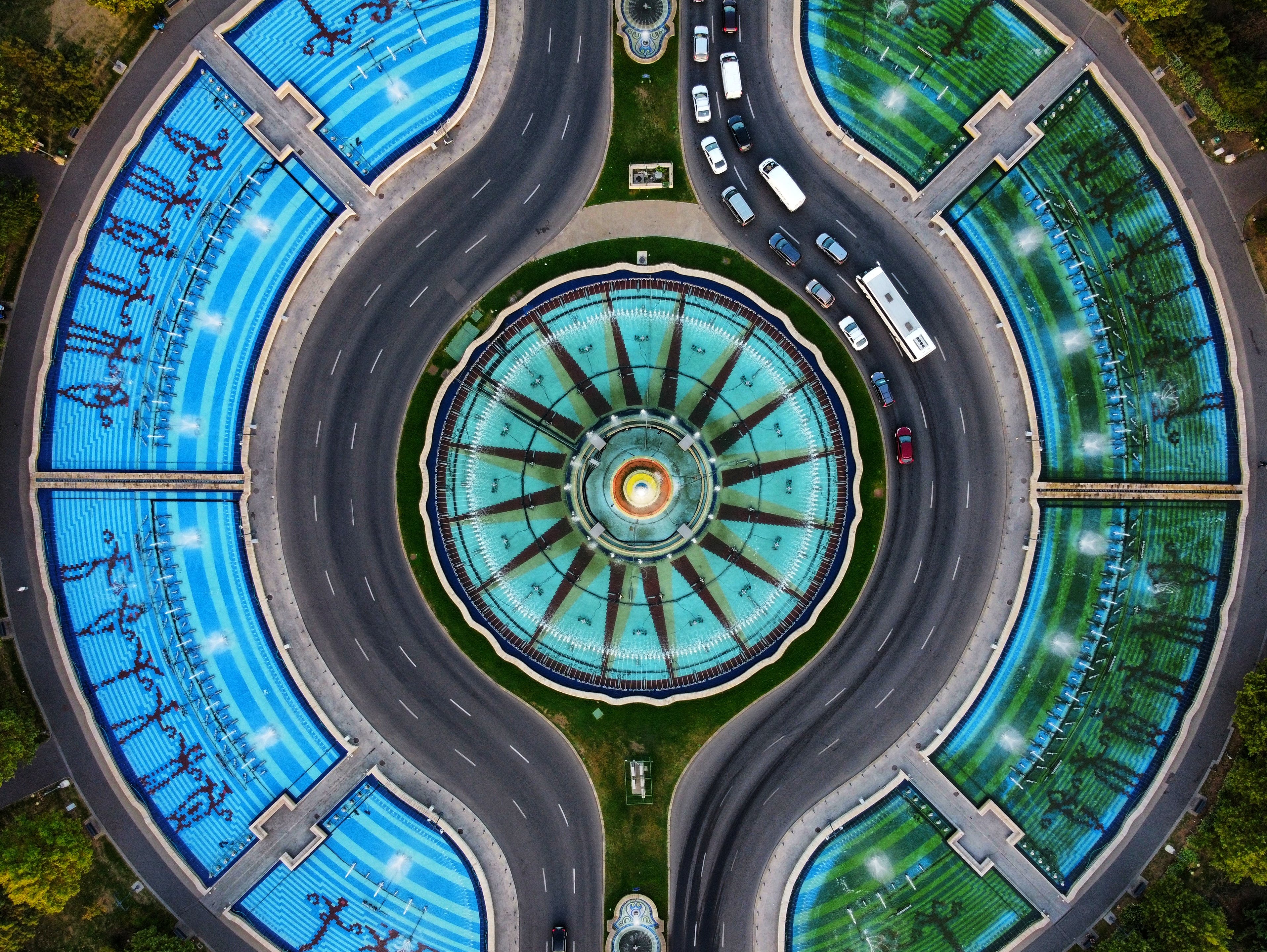
The Munich-based space-tech company HPS had this development in mind more than ten years ago, when no one else was really thinking about ways to avoid space debris. With great support from the space agencies ESA and DLR, the DLR institutes in Bremen and Braunschweig, the companies DSI, Bremen, and formerly HTS, Coswig, plus a seven-digit-investment of HPS, the company´s highly committed young team of experts has created an entire product family under the generic name ADEO, from the smallest versions ADEO-P (Pico), ADEO-C (Cube) and ADEO-N(Nano), ADEO-M (Medium) and the latest member of the group, ADEO-L (Large). The development master plan not only extends even further to possible ADEO variants with up to 100 square meters of braking surface, but also leaves enough room for derivatives with completely different applications, such as the monitoring of space debris smaller than1 cm directly in space.
In its largest flight-ready version to date, L1, ADEO has a take-off weight of 10 kg at dimensions of 43 cm x 43 cm x 25 cm; in contrast to the smaller versions, this unit also requires its own power supply for motor-controlled deployment of the masts and sails. ADEO-L1 generally fits perfectly on satellites up to the 1,500 kilo class.
In the first quarter of next year, ADEO-L1 will be integrated onto a satellite of the Belgian company Redwire for its first test flight at the end of 2024/beginning of 2025 as part of a EU program, while the versions ADEO-N1 and ADEO-N2 have already passed their baptism of fire in space. Approaching the fiery finale is currently ADEO-N2, deployed in December 2022. Since then, it has already lowered its satellite from an orbital altitude of 510 km to 460 kilometers in only 12 months without the aid of any fuel or attitude control. Expected “arrival” in a completely burnt-up state: mid2025 – and thus even around five times faster than without sails and twice as fast as prescribed.
ADEO-L1 will master this path of final in-orbit verification just as safely, company boss Dr.-Ing. Ernst K. Pfeiffer is certain. As with the other versions, it will then go straight into series production for which the company has special production facilities at its Munich and Bucharest sites.

